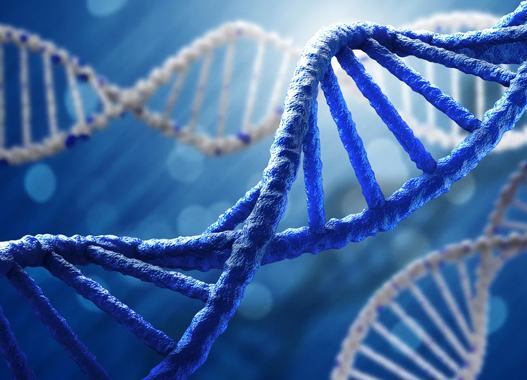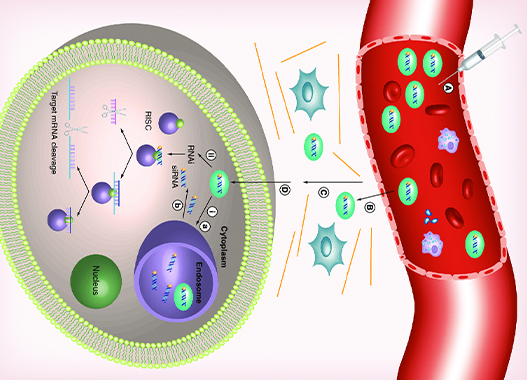Science & Technology
- Home
- Science & Pipeline
- Science & Technology

Our Technology
Unleashing the Power of Gene and RNA Therapy
Canary is at the forefront of developing transformative gene and RNA therapies for rare diseases. We leverage the power of mRNA, RNAi therapeutics, and gene therapies to provide comprehensive and lasting solutions.
Our novel approaches aim to
- Halt disease progression: By targeting the root cause of rare diseases, we strive to stop them in their tracks.
- Repair metabolic mechanisms: We address underlying metabolic dysfunctions contributing to obesity and other metabolic disorders.
- Restore neurological function: Our therapies aim to repair damage and restore normal function in the nervous system.
Our research centers around the complexities of misfolded protein aggregation in the central nervous system and dysregulated microRNA expression, which are implicated in a wide range of diseases including neurodegeneration, metabolic disorders, and aggressive cancers. By addressing these underlying causes, we strive to develop groundbreaking therapies that can truly transform the lives of patients with rare diseases.
Limitations of Traditional Gene Therapy Approaches:
- Potential immunogenicity
- Limited tissue specificity
- Small loading capacity
- Complex manufacturing
- Cost
What Makes Canary Unique
-
Superior Specificity: Our vectorized nanoantibody platform delivers LNP-encapsulated mRNA directly to target cells in the CNS and other targeted tissues, minimizing off-target effects and maximizing therapeutic impact.
-
Tailored LNP Design: We utilize proprietary LNP engineering to optimize delivery, with the potential to cross the blood-brain barrier and ensure stable, efficient mRNA release within targeted cells.
-
Personalized Medicine: The dose and duration of mRNA expression can be tailored to individual patient needs.
-
Disease-Specific Solutions: We apply our platform to develop individualized gene therapies for diverse diseases, including rare conditions with limited or no treatment options.
-
Rapid Prototyping and Development: Our innovative platform, supported by extensive in silico research, and preclinical and safety studies, enables rapid scalable and cost-effective development of gene therapies, accelerating time to market.
Revolutionizing Neurological Disease Treatment with Dual-Combination Gene Therapy
Addressing the Root Cause of Proteinopathies
Neurological disorders often arise from proteinopathies, characterized by the accumulation of misfolded proteins in the brain. These misfolded proteins disrupt cellular processes, leading to neuronal death and the progressive decline in cognitive and motor functions.
Canary’s dual-combination therapy targets the root cause of proteinopathies by employing two distinct yet synergistic mechanisms:
Vectorized Antibodies

One Target
Our proprietary vectorized antibodies are designed to specifically bind and neutralize misfolded proteins, preventing their aggregation and toxicity. These antibodies are engineered to cross the blood-brain barrier, ensuring effective delivery to the affected areas of the brain.
Functional Transgene Replacement

Multiple Target
We utilize gene therapy to replace defective genes with functional copies, correcting the genetic abnormalities that underlie protein misfolding. This approach restores the production of normal proteins, halting the progression of disease and promoting cellular repair.

The Power of LNP mRNA Precision Medicine
Leveraging Proven Technology to Transform Gene and RNA Therapy for Rare Metabolic Disorders & Rare Diseases
What is LNP & how does it work:
Lipid nanoparticles (LNPs) are delivery vehicles composed of biocompatible lipids (fats) that encapsulate therapeutic agents. They offer important therapy advantages:
- Biocompatibility: Their lipid composition closely resembles biological membranes, minimizing immune system reactions and toxicity.
- Versatility: They can be customized to encapsulate various types of therapeutic agents for diverse applications.
- Targeted Delivery: They can be functionalized with targeting ligands to specifically bind to receptors on cells in the central nervous system (CNS), enhancing drug delivery and reducing side effects.
- Controlled Release: They can be designed to release their cargo gradually over time, providing sustained therapeutic effects.
What is mRNA & how does it work:
- mRNA (messenger ribonucleic acid) is a molecule that carries instructions from DNA in the nucleus to ribosomes in the cytoplasm, telling them which proteins to build.
- The mRNA is encased in lipid particles that protect it and help it enter cells. Once inside the targeted cell, the mRNA instructs the cell's machinery to make copies of specific proteins.
- mRNA was first used in COVID-19 vaccines with great success.
Key Advantages:
- Reduced time and cost
- Improved target selection
- Personalized medicine
- Reduced animal testing
How is Canary using AI to support R&D
-
Target Identification and Validation: AI can help analyze large datasets of genetic and molecular information. This has helped Canary find and prioritize promising targets for gene therapy development saving time and resources.
-
Vector Design and Optimization: AI is being used to help Canary design and optimize vectors used to deliver gene therapy payloads. Machine learning can analyze simulations of vector interactions with cells to predict potential problems and guide iterative design improvements.
-
Trial Design and Analysis: Canary is using AI for high-throughput analysis of pre-clinical data, significantly accelerating the analysis. AI will be used to analyze clinical trial data to identify early signs of efficacy or need for dosing changes, allowing for faster adjustments to trial design.
-
Regulatory Approval: Canary will use AI I to help analyze large datasets of pre-clinical and clinical data to prepare regulatory submissions, streamlining the approval process.
RNAi drug development complemented by AI guided novel biomarker discovery and diagnostics.
Limitations and solutions
The Science of RNAi
Leveraging the body’s naturally occurring ribonucleic acid interference (RNAi) response, Canary is working to develop therapies that target key disease proteins.
RNAi therapies utilize two short segments of RNA, known as short interfering, or silencing RNA (siRNA), to defeat proteins involved in the progression of certain diseases. The siRNA segments are encapsulated within a histidine-lysine polypeptide (HKP) that ensures their intact delivery to target cells within the body. Once taken up at a cellular level, the siRNA strands are released to activate an enzymatic process driven by the RNA-Induced Silencing Complex (RISC). Through this process, the messenger RNA strands of the disease proteins are targeted and cleaved, ultimately preventing their function to express proteins within a cell.
In addition to the synergistic effect of dual gene/protein targeting, RNAi therapeutics work to prevent the reproduction of harmful proteins within the body, rather than neutralizing existing disease. Additionally, this new class of drugs offers speedier development timelines compared to traditional methods of development involving the screening of small molecules or generating antibodies against a protein. This speedier development along with the potential for earlier treatment offers hope for improving the lives of patients who have been diagnosed with conditions ranging from cancer to fibrotic diseases.
Canary DigiGENE miRNA Diagnostic overview
Our point of care diagnostic platform uses Al to read miRNA expression patterns in complex diseases at the earliest stages.
Studies have shown a clear distinction in miRNA expression patterns between disease sample and normal healthy samples. This is a heat map of four breast cancer patients showing separation of miRNA expression profiles in tumors and normal tissues.
WHAT IS THE SCIENCE BEHIND RNA interference?
RNA interference (RNAi) is a natural process that cells use to regulate gene expression. It works by silencing the expression of genes that are involved in disease.
How does RNAi work?
RNAi is a two-step process. In the first step, a double-stranded RNA (dsRNA) molecule is cleaved by an enzyme called Dicer. This produces two single-stranded RNA (ssRNA) molecules, which are called siRNAs (short interfering RNAs).
In the second step, the siRNAs bind to a protein complex called the RNA-induced silencing complex (RISC). The RISC then binds to the target mRNA and cleaves it, preventing it from being translated into protein.
AntiMirs
AntiMirs are short RNA molecules that are designed to bind to and inhibit the function of miRNAs. They can be used to treat diseases that are caused by the overexpression of miRNAs.
AntiMirs can be delivered to cells in a variety of ways, including
- Intravenous injectionThis is the most common method of delivering AntiMirs
- Intramuscular injection This method is used when the target cells are located in the muscle tissue
- Intranasal delivery This method is used to deliver AntiMirs to the cells in the nose and throat
- Inhalation This method is used to deliver AntiMirs to the lungs
- Topical delivery This method is used to deliver AntiMirs to the skin
Canary's AlloMir gene-silencing platform can be leveraged to investigate a variety of diseases and conditions
Advantages of AntiMir technology
Stability
AntiMirs are more stable than siRNAs. This is because they are single-stranded RNA molecules, while siRNAs are double-stranded RNA molecules. Double-stranded RNA molecules are more easily degraded by enzymes in the bloodstream and tissues.
Specificity
AntiMirs can be designed to be more specific than siRNAs. This is because they can be designed to bind to a specific miRNA, while siRNAs can bind to a range of miRNAs.
Safety
AntiMirs may be safer than siRNAs. This is because they are less likely to trigger an immune response.
AntimicroRNA (AntiMir) therapeutics have several potential advantages over siRNA therapeutics:

- MicroRNAs (miRNAs) are small RNA molecules that can modulate gene expression to affect numerous biological processes
- microRNAs play a critical role in human biology
- microRNA is important for drug development











